-
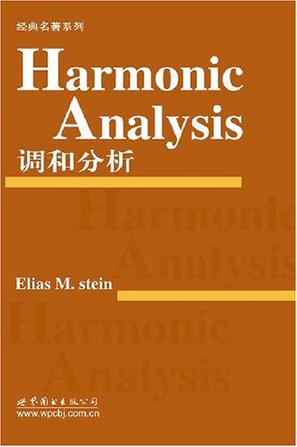
调和分析
这是近年来现代分析数学最著名、最重要的论著之一。近30年来,调和分析历经了巨大发展,涌现了许多新的成果,而此书的主旨正是对这一领域的最新发展作了全面、系统、深入的阐述。书中主要论述了以下几方面的内容:调和分析经典理论的实变刻画;拟微分算子与奇异积分算子;几乎正交理论;振荡积分理论;极大算子和极大平均理论Heisenberg群上的调和分析等。作者尽量使用第一手材料,而且尽其所能将每一种证明方法的优越性告诉读者。每章的附录对最新的研究成果及其在其它学科中的应用进行了详细的评述。总之,这是一部论证严谨、内容丰富而不乏深度的不可多得的优秀学术专著。 -

无穷小计算
“无穷小分析”这一名称是由欧拉创始的,这正是数学中“分析”一支名称的起源。本书作者所在的布尔巴基学派对20世纪的法国数学教学改革作出了重要的贡献,但也出现了一些消极影响,例如倡导独立子传统数学的所谓“新数学”;也有过只重视理论。而忽略计算的倾向。本书是作者为纠正这些偏向而设置的课程编写的。在本书所讲的无穷小计算中。使用不等式要比使用等式多得多,而且可用三个词作为本书的提要:求上界、求下界、逼近。作者希望读者通过学习本书。不是只学会一些无穷小分析中运算的机械程序,而是还懂得有关“直观”的概念。 《无穷小计算》包含函数与映射的逼近及渐近展开式、复查解析函数的基础、一阶与二阶线性微分方程的近似解法与稳定性以及贝寡尔函数等。书中有不少新意。并附有相当数量的优秀习题。 《无穷小计算》可供大学数学专业师生选教,选学。也可供广大数学工作者和相关专业人员参考。 -
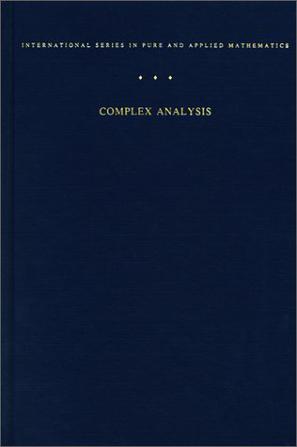
Complex Analysis
A standard source of information of functions of one complex variable, this text has retained its wide popularity in this field by being consistently rigorous without becoming needlessly concerned with advanced or overspecialized material. Difficult points have been clarified, the book has been reviewed for accuracy, and notations and terminology have been modernized. Chapter 2, Complex Functions, features a brief section on the change of length and area under conformal mapping, and much of Chapter 8, Global-Analytic Functions, has been rewritten in order to introduce readers to the terminology of germs and sheaves while still emphasizing that classical concepts are the backbone of the theory. Chapter 4, Complex Integration, now includes a new and simpler proof of the general form of Cauchy's theorem. There is a short section on the Riemann zeta function, showing the use of residues in a more exciting situation than in the computation of definite integrals. -
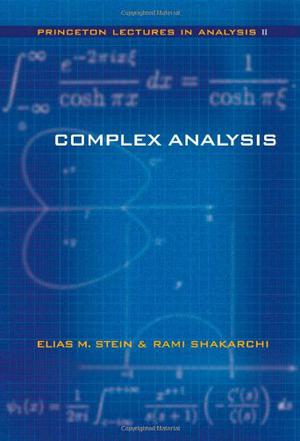
Complex Analysis
With this second volume, we enter the intriguing world of complex analysis. From the first theorems on, the elegance and sweep of the results is evident. The starting point is the simple idea of extending a function initially given for real values of the argument to one that is defined when the argument is complex. From there, one proceeds to the main properties of holomorphic functions, whose proofs are generally short and quite illuminating: the Cauchy theorems, residues, analytic continuation, the argument principle. With this background, the reader is ready to learn a wealth of additional material connecting the subject with other areas of mathematics: the Fourier transform treated by contour integration, the zeta function and the prime number theorem, and an introduction to elliptic functions culminating in their application to combinatorics and number theory. Thoroughly developing a subject with many ramifications, while striking a careful balance between conceptual insights and the technical underpinnings of rigorous analysis, "Complex Analysis" will be welcomed by students of mathematics, physics, engineering and other sciences. "The Princeton Lectures in Analysis" represents a sustained effort to introduce the core areas of mathematical analysis while also illustrating the organic unity between them. Numerous examples and applications throughout its four planned volumes, of which "Complex Analysis" is the second, highlight the far-reaching consequences of certain ideas in analysis to other fields of mathematics and a variety of sciences. Stein and Shakarchi move from an introduction addressing "Fourier" series and integrals to in-depth considerations of complex analysis; measure and integration theory, and Hilbert spaces; and, finally, further topics such as functional analysis, distributions and elements of probability theory. -
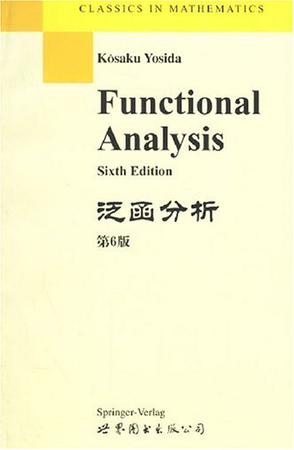
泛函分析
he present book is based on lectures given by the author at the University of Tokyo during the past ten years. It is intended as a textbook to be studied by students on their own or to be used in a course on Functional Analysis, i.e., the general theory of linear operators infunction spaces together with salient features of its application to diverse fields of modem and classical analysis. Necessary prerequisites for the reading of this book are summarized,with or without proof, in Chapter 0 under titles: Set Theory, Topological Spaces, Measure Spaces and Linear Spaces. Then, starting with the chapter on Semi-norms, a general theory of Banach and Hilbert spaces is presented in connection with the theory of generalized functions of S. L. SOBOLEV and L. SCHWARTZ. While the book is primarily addressed to graduate students, it is hoped it might prove useful to research mathematicians, both pure and applied. The reader may pass, e.g., fromChapter IX (Analytical Theory. of Semi-groups) directly to Chapter XIII (Ergodic Theory and Diffusion Theory) and to Chapter XIV (Integration of the Equation of Evolution). Such materials as "Weak Topologies and Duality in Locally Convex Spaces" and "Nuclear Spaces" are presented in the form of the appendices to Chapter V and Chapter X,respectively. These might be skipped for the first reading by those who are interested rather in the application of linear operators. -
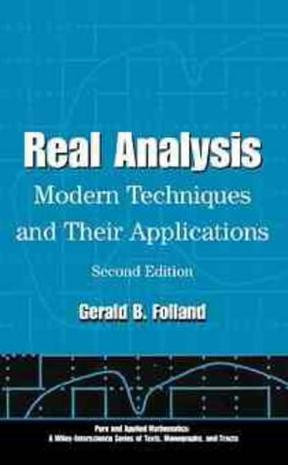
Real Analysis
An in-depth look at real analysis and its applications-now expanded and revised. This new edition of the widely used analysis book continues to cover real analysis in greater detail and at a more advanced level than most books on the subject. Encompassing several subjects that underlie much of modern analysis, the book focuses on measure and integration theory, point set topology, and the basics of functional analysis. It illustrates the use of the general theories and introduces readers to other branches of analysis such as Fourier analysis, distribution theory, and probability theory. This edition is bolstered in content as well as in scope-extending its usefulness to students outside of pure analysis as well as those interested in dynamical systems. The numerous exercises, extensive bibliography, and review chapter on sets and metric spaces make Real Analysis: Modern Techniques and Their Applications, Second Edition invaluable for students in graduate-level analysis courses. New features include: * Revised material on the n-dimensional Lebesgue integral. * An improved proof of Tychonoff's theorem. * Expanded material on Fourier analysis. * A newly written chapter devoted to distributions and differential equations. * Updated material on Hausdorff dimension and fractal dimension.